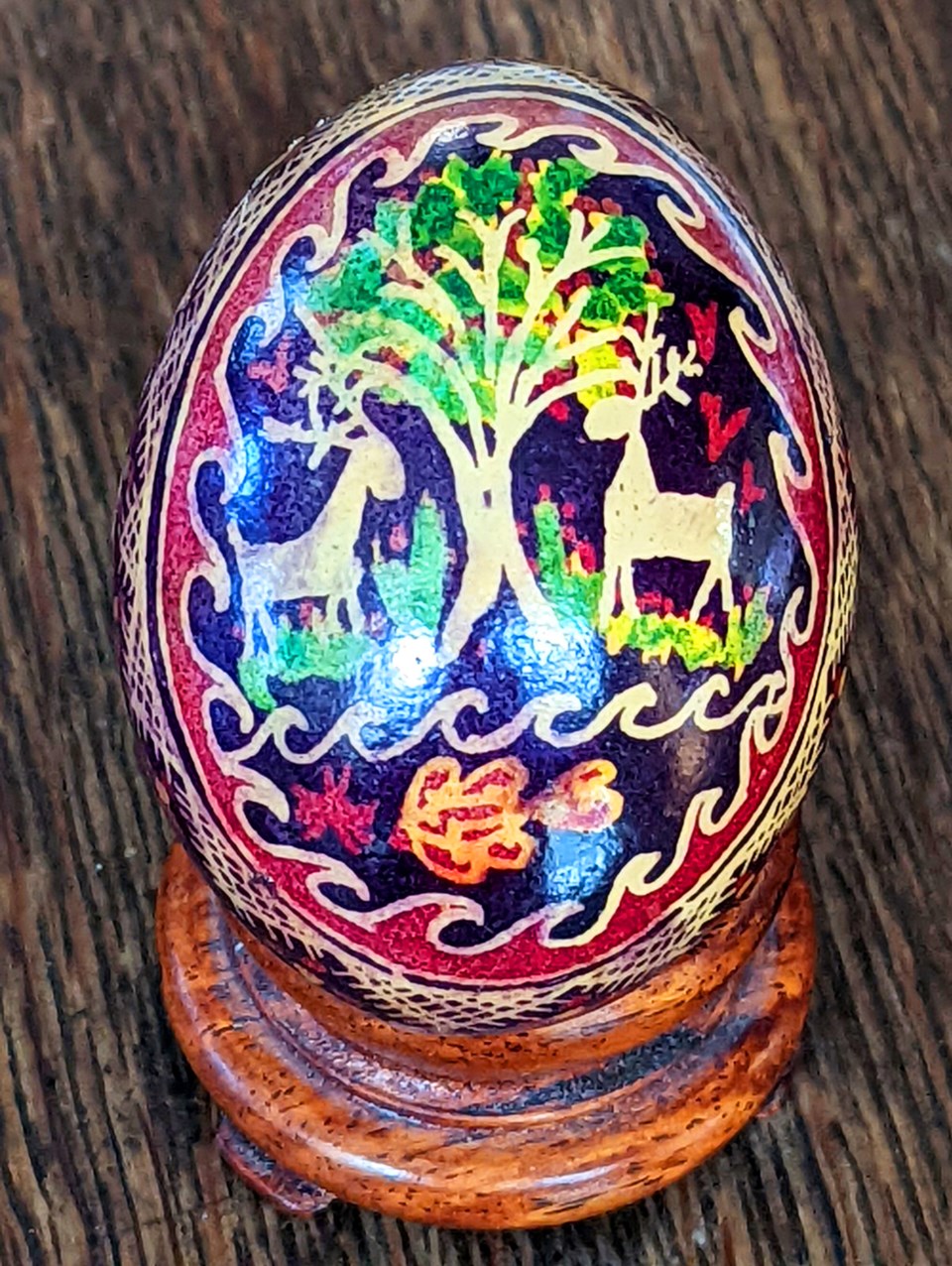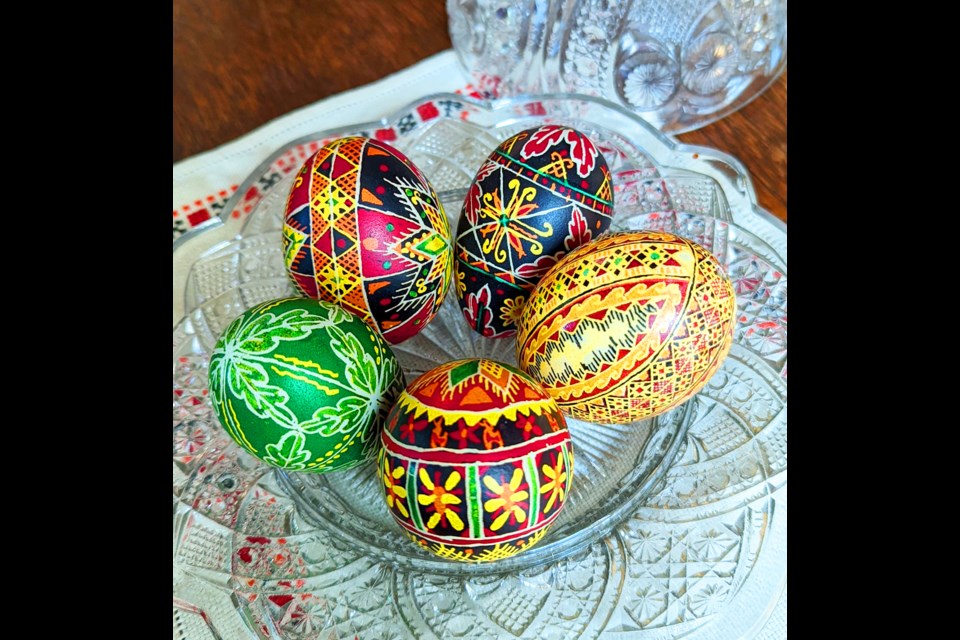This time of year, most Ukrainian Mom’s are quietly making their loved ones Pysanky, (Ukrainian Easter Eggs), writing symbols wishing love, joy, happiness, strength, protection, good health, long lives, bountiful harvests, wealth and prosperity. Every symbol, every colour, every line, every design has a meaning, most wishing a good wish or a prayer.
This year, filled with the sadness and horror of war, I can’t imagine how they are doing so. I have written Pysanky for many years and I could not lift my spirits enough to even start these past few weeks. Makers of Ukrainian Easter eggs would start with saying a prayer for help in writing their designs. I was never taught this ritual so my start would be a week of searching and reading through my many books on Pysanky for new ancient designs to recreate, or noting down elements I liked in various pysanka to combine them into a ‘meaning’-full gift for the members of my family. The work pysanka (one egg) comes from the Ukrainian verb pysaty, meaning ‘to write’. Hopefully each year you can write many pysanky.
I first learned of Ukrainian Easter Eggs in April 1972 from an article written in National Geographic. When my younger brothers and I were oohing and awing over the beautiful eggs my Dad (who always told us we had an Austrian background) glanced at the article and said, ‘My Mom used to make those when I was a little boy’ (so are we Ukrainian?). To our utter amazement, he went out to his shed and made us pens (kitska) for writing with beeswax on the eggs. We happily copied the symbols on the pysanky in the magazine onto our hard boiled eggs.
Nowadays I write my designs on fresh raw eggs washed in warm water with a bit of vinegar because the dye takes better on the uncooked shell. The designs can take hours to days to complete as each colour layer gets covered in a protective layer of wax. The first layer of colour is the actual shell which can be white, brown, green, or blue (if you are lucky to find). Your next dye would be yellow and you progress from there from lighter to darker coloured dyes protecting what you want of each colour before you dye over it.

This year, looking for inspiration to start writing I started following pysankari (multiple-writers) on social media. It became apparent that they were all feeling as worried as I was about Ukraine and their eggs were done in the colours of the Ukrainian flag - blue (sky) yellow (grain, sunflowers). They were also using the trident or tryzub symbol from the Ukrainian flag incorporated as a design element. The pysanky were very beautiful but it was really hard for me to adjust to seeing them on a pysanka.
One group, Pysanky for Ukraine, with members from all over the world, had a Pysanky for Ukraine Day on April 1 via Zoom. All members spent the day sharing their designs, techniques, thoughts and events that they planned for fundraising for Ukraine, all while writing pysanky to honour Ukraine. A lot of the design colours were blue and yellow with the tryzub or sunflowers somewhere on the egg.
It was the most inspiring, comforting day I have ever spent. A poignant poem was shared that basically said ‘don’t worry my sister if you can’t make an egg this year - I/we will do it for you’. We all cried because we all shared the concern of if they could make the eggs for their families.
Members of the group who live in Ukraine joined for a few minutes and told their stories from wherever they were hiding (tired, exhausted and worn to the bone). They all expressed their gratitude at the support given to them by the world and were honoured by the many eggs dedicated to Ukraine. I decided I needed to learn how to put sunflowers (symbols of love, charity and good will as well as representing the warm rays of the sun) on my first egg this year. Something I had never done before but I will do again, gladly.
If you would like to learn more about the history and meaning of Ukrainian Easter Eggs and how to make them please join our next Rotary meeting on April 11 at 7:30pm via Zoom, where I will share more of my story and demonstrate writing pysanka. You can find the link on the Bowen Rotary Club’s website: www.bowenrotary.com.
You can also help Bowen Rotary raise funds to support Ukraine by donating to ShelterBox on the Easter weekend in front of the Snug (weather permitting). Pysanka will be on display with an in-person demonstration. I will share with you what I learned from a grandmother I never knew.
After all there is an old Ukrainian legend that tells the story to explain the belief of ‘the more pysanky created each year - the less evil there is in the world’.


